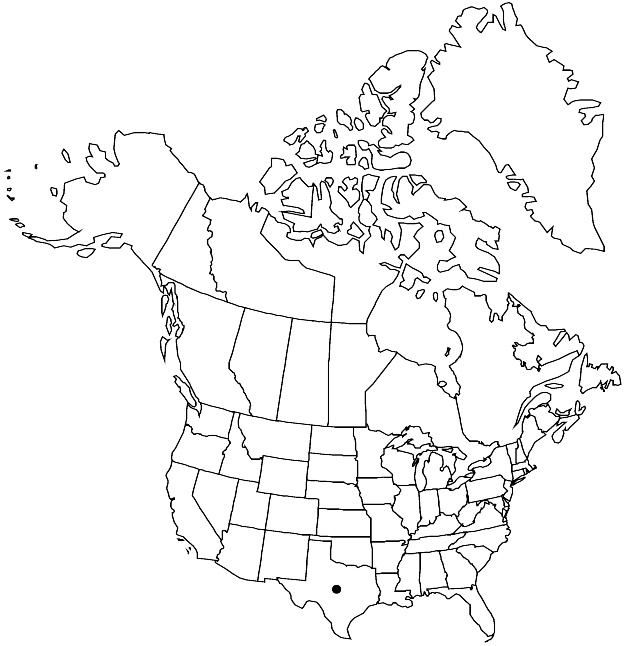Difference between revisions of "Streptanthus platycarpus"
Smithsonian Contr. Knowl. 5(6): 10. 1853.
FNA>Volume Importer |
imported>Volume Importer |
||
| (4 intermediate revisions by 2 users not shown) | |||
| Line 11: | Line 11: | ||
|name=Erysimum platycarpum | |name=Erysimum platycarpum | ||
|authority=(A. Gray) Kuntze | |authority=(A. Gray) Kuntze | ||
| + | |rank=species | ||
}} {{Treatment/ID/Synonym | }} {{Treatment/ID/Synonym | ||
|name=Streptanthus sparsiflorus | |name=Streptanthus sparsiflorus | ||
|authority=Rollins | |authority=Rollins | ||
| + | |rank=species | ||
}} | }} | ||
|hierarchy=Brassicaceae;Brassicaceae tribe Thelypodieae;Streptanthus;Streptanthus platycarpus | |hierarchy=Brassicaceae;Brassicaceae tribe Thelypodieae;Streptanthus;Streptanthus platycarpus | ||
| Line 39: | Line 41: | ||
-->{{#Taxon: | -->{{#Taxon: | ||
name=Streptanthus platycarpus | name=Streptanthus platycarpus | ||
| − | |||
|authority=A. Gray | |authority=A. Gray | ||
|rank=species | |rank=species | ||
| Line 54: | Line 55: | ||
|publication year=1853 | |publication year=1853 | ||
|special status= | |special status= | ||
| − | |source xml=https:// | + | |source xml=https://bitbucket.org/aafc-mbb/fna-data-curation/src/2e0870ddd59836b60bcf96646a41e87ea5a5943a/coarse_grained_fna_xml/V7/V7_1254.xml |
|tribe=Brassicaceae tribe Thelypodieae | |tribe=Brassicaceae tribe Thelypodieae | ||
|genus=Streptanthus | |genus=Streptanthus | ||
Latest revision as of 22:31, 5 November 2020
Annuals; (glaucous), usually glabrous throughout (sometimes distalmost stems and pedicels pubescent). Stems (simple from base), usually branched, 1.2–10 dm, (sometimes sparsely pilose distally). Basal leaves (soon withered); subrosulate; petiolate; blade oblanceolate in outline, 4–20 cm, margins sinuate to lyrate or pinnatifid. Cauline leaves: blade ovate, 1.5–15 cm × 5–60 mm, (smaller distally), base auriculate to amplexicaul, margins entire or sinuate-dentate (entire distally). Racemes usually ebracteate or proximalmost flowers bracteate, rarely bracteate throughout, (lax). Fruiting pedicels divaricate to ascending, (straight), 7–35 mm, (glabrous or pilose). Flowers: calyx campanulate; sepals purple to deep maroon, (lanceolate), 8–12 mm, not keeled; petals (spreading to reflexed), lavender or purplish lavender, 16–27 mm, blade 10–18 × 6–9 mm, margins not crisped, claw 6–10 mm (crisped); stamens in 3 unequal pairs; filaments (distinct): abaxial pair 4–6 mm, lateral pair 3–5 mm, adaxial pair 5–8 mm; anthers (all) fertile, 4.5–6 mm; gynophore 0.3–1mm. Fruits erect to divaricate-ascending, smooth, straight, strongly flattened, 4–9.5 cm × 4.5–6 mm; valves each with prominent midvein; replum straight; ovules 26–42 per ovary; style 0.5–2 mm; stigma strongly 2-lobed. Seeds orbicular to oblong-orbicular, 4.5–5 × 4–5 mm; wing 0.7–1.2 mm wide, continuous. 2n = 28.
Phenology: Flowering Mar–Apr.
Habitat: Cliff ledges, often on limestone, rocky sites, roadsides, rocky creek beds
Elevation: 400-1200 m
Distribution

Tex., Mexico (Coahuila).
Discussion
Streptanthus platycarpus is known in Texas from Brewster, Crockett, Culberson, Pecos, Presidio, Terrell, and Val Verde counties.
Although the racemes in Streptanthus platycarpus are usually ebracteate or have only the proximalmost 1–3 flowers bracteate, an exception is one collection (Hinckley 3780, GH) in which all flowers are bracteate.
Selected References
None.